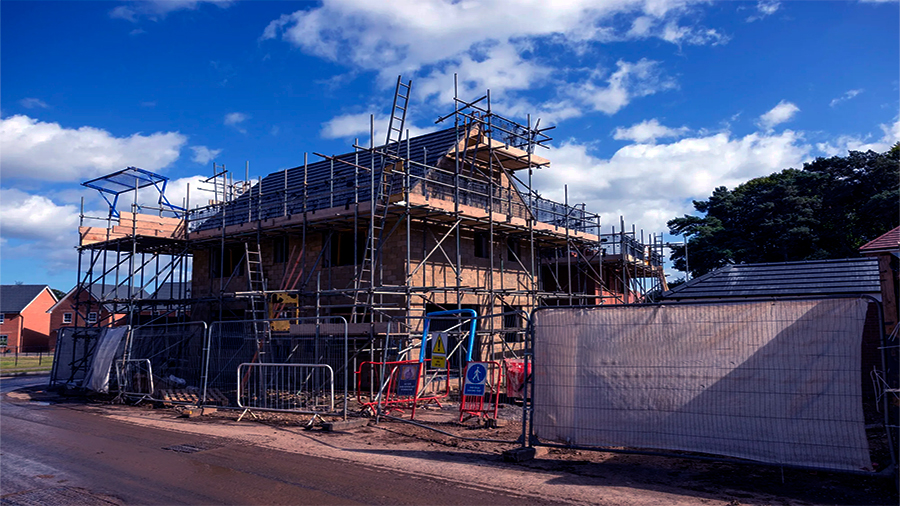Generation Without Property: Will Millennials Take Out a Mortgage in the 2030s?
Millennials have been called the “generation without property” for more than a decade. Many came of age during the global financial crisis, struggled with stagnant wages, rising rents, and debt from education. Now they are entering their forties and fifties, the traditional peak years for homeownership. The question is whether the 2030s will finally see this group step into the housing market through mortgages—or whether they will remain long-term renters in a system that looks less accessible with each passing year.
The Weight of Debt and Delayed Starts
One reason millennials have been slower to buy is debt. Student loans in the United States and Europe reached record levels just as this generation entered the workforce. Many also lived through precarious employment after 2008, which delayed savings. By the time they could afford down payments, housing markets had already surged. Mortgages became less about affordability and more about competing with institutional investors. As the 2030s approach, many still carry debt from education, credit cards, or personal loans. This reduces their borrowing power and makes banks more cautious, even when incomes are higher than in their twenties.
Housing Markets and Supply Pressures
Another factor shaping millennial access to mortgages is the housing market itself. In cities from London to Los Angeles, supply has lagged behind demand for years. New construction has not kept up with population growth, pushing prices beyond the reach of middle-income earners. While rural or secondary cities remain more affordable, they often lack the jobs millennials seek. If the 2030s continue with constrained supply, mortgages may not be the bridge to ownership many hope for. The availability of credit means little if prices are simply too high compared to wages.
Changing Mortgage Models
The 2030s may see innovations in mortgage structures designed for buyers who cannot save large down payments. Some banks are experimenting with shared-equity loans, where lenders or governments take part ownership in exchange for reduced monthly payments. Others explore ultra-long mortgage terms, stretching beyond 30 years, even to 50. These products lower barriers in the short term but increase overall debt exposure. Millennials may turn to these models out of necessity, but the trade-off is committing to repayment horizons that stretch into retirement years.

Cultural Shifts in Attitudes Toward Ownership
It is not just economics—cultural preferences are shifting too. Many millennials value flexibility over permanence, preferring to rent in central locations rather than own homes in suburbs. For some, a mortgage feels like a trap, tying them to one place or to decades of repayment. In the 2030s, this mindset may soften if stability becomes more appealing with age, especially for those raising families. Still, a sizable share of this generation may never view property as the ultimate goal, instead prioritizing mobility, experiences, and financial independence without a house on the balance sheet.
The Role of Policy and Government Support
Governments will play a decisive role in whether millennials shift from renters to owners. Tax incentives, subsidies, or low-interest loan schemes could expand access. Some countries are already experimenting with state-backed mortgage programs targeting younger buyers. However, policies often clash with broader affordability problems. Stimulating demand without fixing supply can push prices higher. By the 2030s, success will depend on whether governments can both increase housing stock and support lending models that balance risk for banks and opportunity for buyers. Without this balance, many millennials will remain on the sidelines.
Global Differences in Millennial Homeownership
The picture also varies globally. In parts of Asia, where family networks play a stronger role in financing, millennials may find it easier to access mortgages with parental support. In North America and Europe, where independence is emphasized, young buyers often struggle alone. Meanwhile, in developing economies, rapid urbanization and informal lending make property ownership complex. By the 2030s, these differences will remain stark: some millennials will inherit or buy with family help, while others will continue renting indefinitely. This uneven reality complicates the idea of a single “generation without property.”
Two Paths in the Same Generation
Consider two examples that highlight the split reality facing millennials. In Canada, some younger buyers have used government-backed first-time homebuyer incentives paired with extended mortgage terms to finally secure homes in secondary cities like Ottawa or Halifax. These programs reduced barriers, but often meant taking on debt commitments stretching into their sixties. By contrast, in Spain, many millennials in major cities like Barcelona and Madrid remain renters despite rising incomes. Limited housing supply, investor-driven markets, and strict lending criteria prevent them from stepping onto the property ladder. These parallel stories show how the same generation experiences housing opportunities very differently depending on policy, culture, and local market conditions.

Asia’s Contrasting Stories
Asia reveals another contrast. In Singapore, millennials benefit from one of the world’s most robust public housing systems. With government subsidies and mandatory savings schemes like the Central Provident Fund, young buyers can access mortgages on favorable terms, making ownership achievable for a majority even in expensive urban areas. In Japan, however, the picture is different. Aging demographics and shrinking populations mean housing markets often stagnate. Many millennials there inherit property rather than buy, while younger urban renters hesitate to take on long-term debt in cities with falling demand. These two examples illustrate how different policies and demographic forces will shape whether millennials in Asia view mortgages as opportunities or burdens in the 2030s.
Emerging Markets and Housing Pressure
In India, millennials face a very different housing landscape. Rapid urbanization has pushed millions into growing cities like Bengaluru and Mumbai, where demand far outstrips supply. Mortgages are available, but high interest rates and volatile employment conditions make them risky. Many rely on informal family lending or cooperative housing societies instead of traditional banks. Brazil offers a similar challenge. Programs like Minha Casa Minha Vida helped lower-income buyers access housing, but inflation and economic swings often undermine repayment capacity. Millennials in these markets see mortgages as both an opportunity for security and a gamble tied to unstable economies. These stories show that in emerging economies, property ownership depends as much on political and financial stability as on personal ambition.
Conclusion
Millennials in the 2030s will face a mixed outlook. Some will break into ownership through new mortgage products, policy support, or family assistance. Others will continue renting, either by choice or by necessity, shaped by debt and high prices. The idea of universal homeownership may fade, replaced by a more fragmented reality where property is a privilege rather than an expectation. The Canadian, Spanish, Singaporean, Japanese, Indian, and Brazilian cases show that outcomes vary widely across regions. Whether millennials remain the “generation without property” will depend not just on their choices but on how governments, banks, and housing markets evolve to meet their needs—or fail to do so.

